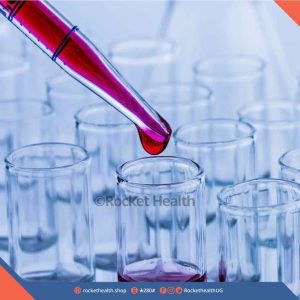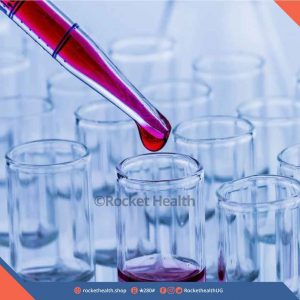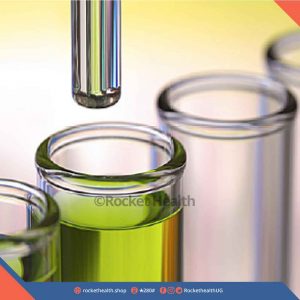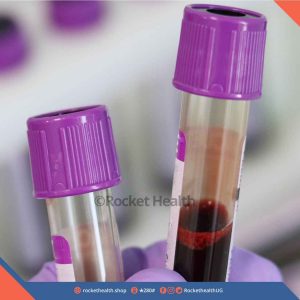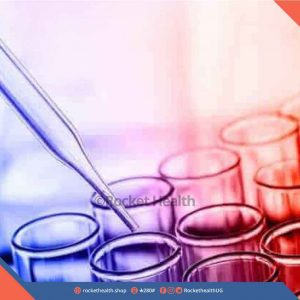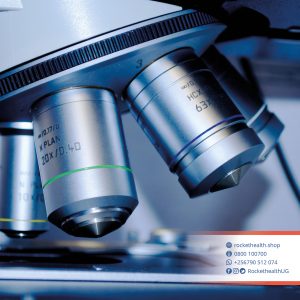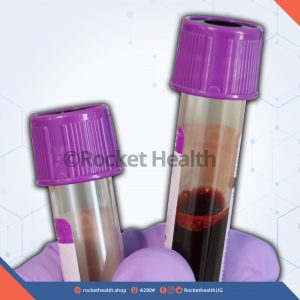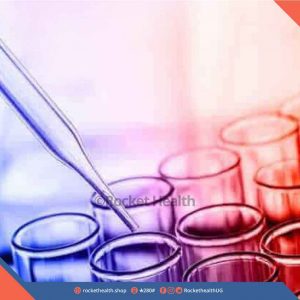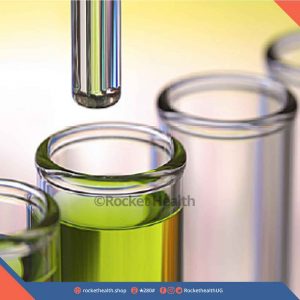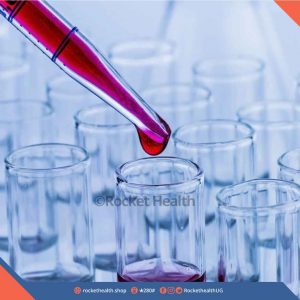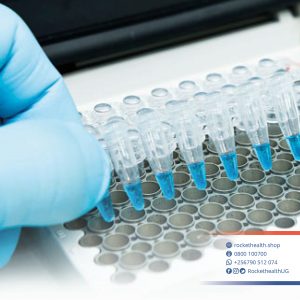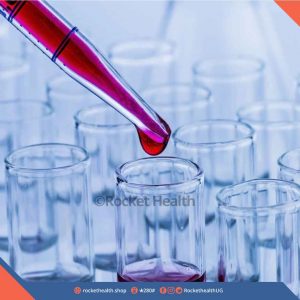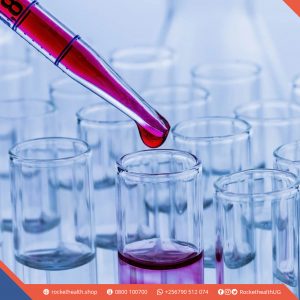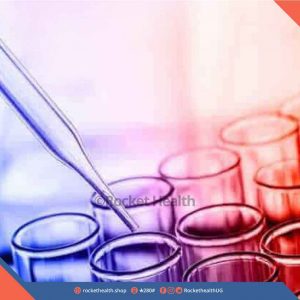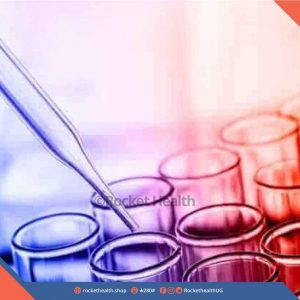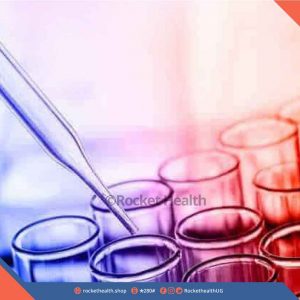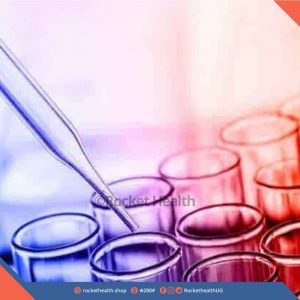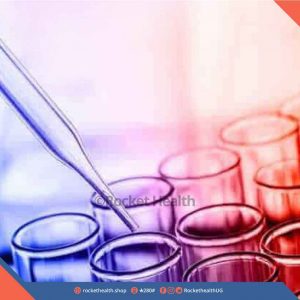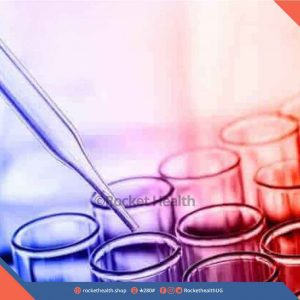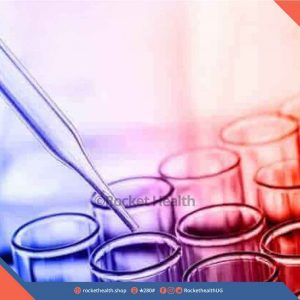No products in the cart.
-
Troponin T
Troponin tests measure the level of cardiac-specific troponin in the blood to help detect heart injury or recent heart attack.
Blood.
No specific patient preparation protocol required. Inform the doctor if you are on any medications, have any allergies or underlying medical conditions before this test.
Normally, troponin is present in very small to undetectable quantities in the blood. When there is damage to heart muscle cells, troponin is released into the blood. The more damage there is, the greater the concentration in the blood. Primarily, troponin tests are used to help determine if an individual has suffered a heart attack. They may also be helpful in evaluating someone for other forms of heart injury. When a person has a heart attack, levels of cardiac-specific troponins I and T can become elevated in the blood within 3 or 4 hours after injury and may remain elevated for 10 to 14 days
60,000UGXTroponin T
60,000UGX -
Troponin I
Troponin tests measure the level of cardiac-specific troponin in the blood to help detect heart injury or recent heart attack.
Blood.
No specific patient preparation protocol required. Inform the doctor if you are on any medications, have any allergies or underlying medical conditions before this test.
Troponins are a group of proteins found in skeletal and heart (cardiac) muscle fibers that regulate muscular contraction. Normally, troponin is present in very small to undetectable quantities in the blood. When there is damage to heart muscle cells, troponin is released into the blood. The more damage there is, the greater the concentration in the blood. Primarily, troponin tests are used to help determine if an individual has suffered a heart attack. They may also be helpful in evaluating someone for other forms of heart injury. When a person has a heart attack, levels of cardiac-specific troponins I and T can become elevated in the blood within 3 or 4 hours after injury and may remain elevated for 10 to 14 days.
60,000UGXTroponin I
60,000UGX -
Testosterone
This test measures the level of testosterone in the blood. Testosterone is the main sex hormone (androgen) in men. It is responsible for male physical characteristics. Although it is considered to be a “male” sex hormone, it is present in the blood of both men and women.
Blood.
Early morning samples are preferred. A woman’s sample should be collected at specific times during her menstrual cycle. Inform the doctor if you are on any medications, have any allergies or underlying medical conditions before this test.
Testosterone is mainly produced by special endocrine tissue (the Leydig cells) in the male testicles. It is also produced by the adrenal glands in both males and females and, in small amounts, by the ovaries in females.
50,000UGXTestosterone
50,000UGX -
Serum Crag
Serum Crag is a test that detects cryptococcal antigen (abbreviated “CrAg”) in blood, an indicator of cryptococcal meningitis infection.
Blood.
No specific patient preparation protocol required. Inform the doctor if you are on any medications, have any allergies or underlying medical conditions before this test.
Cryptococcal infection usually presents as meningitis, which is a swelling of the meninges,the tissues that protect the brain and spinal cord. It is caused by C. neoformans which enters the human body via the respiratory tract. Elimination of C. neoformans is through cell mediated immunity, with the participation of neutrophils, macrophages and cytotoxic T lymphocytes. In the face of immunodeficiency(HIV infection, pregnancy etc), control of the infection fails, the fungus may then disseminate to the central nervous system or other organs. Definitive diagnosis is confirmed by the culture of specimens, often the cerebrospinal fluid (CSF) or blood, and sometimes in respiratory secretions The condition requires hospitalization and treatment with the intravenous (IV) antifungal medication amphotericin B.
35,000UGXSerum Crag
35,000UGX -
Semen Analysis
A complete semen analysis measures the quantity and quality of the fluid released during ejaculation often used in the evaluation of male infertility.
Semen.
For infertility testing, refrain from having sex or masturbation for 2-5 days before sample collection; carefully follow instructions provided.
Semen is a viscous, whitish liquid that contains sperm and the products from several glands. In an evaluation of a man’s fertility, each aspect of the semen analysis is considered i.e. viscocity, volume, motility, morphology, sperm concentration, semen PH, fructose, white blood cells, clamping as well as the findings as a whole. Semen from a man can vary widely from sample to sample. Abnormal results on one sample may not indicate a cause of infertility, and multiple samples may need to be tested before a diagnosis is made
120,000UGXSemen Analysis
120,000UGX -
Rota Virus
The rotavirus test is a stool test used to diagnose a rotavirus infection which causes vomiting and diarrhoea especially in children.
Stool.
No specific patient preparation protocol required. Inform the doctor if you are on any medications, have any allergies or underlying medical conditions before this test.
Rotavirus is a viral organism that affects the intestines and causes vomiting and diarrhea. This infection is especially common in young children, but it can affect adults, too. A rotavirus infection causes a condition called viral gastroenteritis. Rotavirus passes easily from person to person. It can also be picked up by touching a surface contaminated by someone with rotavirus. Sharing food or drink with an infected person can also spread it. Most people don’t need treatment for rotavirus, but it’s still important to diagnose the infection and watch for signs of dehydration.
35,000UGXRota Virus
35,000UGX -
Reticulocyte Count
A reticulocyte test determines the number and/or percentage of reticulocytes( Immature Red Blood Cells) in the blood and is a reflection of recent bone marrow function or activity.
Blood.
No specific patient preparation protocol required. Inform the doctor if you are on any medications, have any allergies or underlying medical conditions before this test.
Red blood cells are produced in the bone marrow, where blood-forming (hematopoietic) stem cells differentiate and develop, eventually forming reticulocytes and finally becoming mature RBCs. A variety of diseases and conditions i.e hemorrhage, hemolysis, bone marrow disorder, kidney disease can affect the production of new RBCs and/or their survival, in addition to those conditions that may result in significant bleeding. These conditions may lead to a rise or drop in the number of RBCs and may affect the reticulocyte count.
25,000UGXReticulocyte Count
25,000UGX -
Prothrombin Time (INR)
The prothrombin time (PT) is a test that helps evaluate your body’s ability to appropriately form blood clots.
Blood.
None needed, however if you are receiving anticoagulant therapy, the blood sample should be collected before taking your daily dose.
A PT measures the number of seconds it takes for a clot to form in your sample of blood after substances (reagents) are added. The PT is often performed along with a partial thromboplastin time (PTT) and together they assess the amount and function of proteins called coagulation factors that are an important part of proper blood clot formation. For people taking warfarin, most laboratories report PT results that have been adjusted to the INR. A prolonged PT means that the blood is taking too long to form a clot, this may be caused by conditions such as liver disease, vitamin K deficiency, or a coagulation factor deficiency (e.g., factor VII deficiency).
35,000UGXProthrombin Time (INR)
35,000UGX -
Luitenising Hormone
This test measures the amount of luteinizing hormone in the blood. (LH) is a hormone associated with reproduction. Its stimulation of either ovary or testicles results in the release of an egg from the ovary (ovulation) in women or testosterone production in men.
Blood.
Early morning samples are preferred. A woman’s sample should be collected at specific times during her menstrual cycle. Inform the doctor if you are on any medications, have any allergies or underlying medical conditions before this test.
LH is produced by the pituitary gland. In women of childbearing age, several hormones (LH, follicle-stimulating hormone (FSH), estrogen and progesterone) rise and fall in a specific sequence during each menstrual cycle. In men, LH stimulates Leydig cells in the testicles to produce testosterone. In infants and children, LH levels rise shortly after birth and then fall to very low levels. Results of an LH test are typically considered with results of other hormone tests, such as FSH, estrogens, and/or testosterone.
50,000UGXLuitenising Hormone
50,000UGX -
Hepatitis B Core Antibody
The test is used to find out whether you are having an active infection with the Hepatitis B virus (HBV).
Blood.
No specific patient preparation protocol required. Inform the doctor if you are on any medications, have any allergies or underlying medical conditions before your this test
Hepatitis B Virus has a central core and a surrounding envelope. Your immune system makes IgM antibodies to the core of HBV during the active stage of infection.The presence of anti-HBc indicates previous or ongoing infection with hepatitis B virus in an undefined time frame. IgM antibody to hepatitis B core antigen (IgM anti-HBc): Positivity indicates recent infection with hepatitis B virus (<6 mos). Its presence indicates acute infection
50,000UGXHepatitis B Core Antibody
50,000UGX -
HIV Elisa
This is one of the more sensitive tests for presence of HIV infection by detecting HIV antigens and antibodies in blood.
Blood.
No specific patient preparation protocol required. Inform the doctor if you are on any medications, have any allergies or underlying medical conditions before your this test
The enzyme-linked immunosorbent assay (ELISA), also known as an enzyme immunoassay (EIA), detects HIV antibodies and antigens in the blood. Antibodies are proteins produced by the immune system, which helps your body fight disease. The immune system produces the antibodies in response to the presence of foreign substances, such as viruses. By contrast, antigens are any foreign substance in the body that causes the immune system to respond.
65,000UGXHIV Elisa
65,000UGX -
Free T4
This is a test used to evaluate the proper functioning of the thyroid gland and monitor thyroid treatment.
Blood.
If you take thyroid hormone as treatment for thyroid disease, it is recommended that your blood sample be drawn before you take your dose for that day. Acute illness may also affect thyroid testing results so it is generally recommended that thyroid testing be avoided in hospitalized patients. Inform the doctor if you are on any medications, have any allergies or underlying medical conditions before this test.
Most of the hormone produced by the thyroid is T4. This hormone is relatively inactive, but it is converted into the much more active T3 in the liver and other tissues. If the thyroid gland does not produce sufficient T4 and T3 (underactive thyroid), due to thyroid dysfunction or to insufficient TSH, then the affected person experiences symptoms of hypothyroidism such as weight gain, dry skin, cold intolerance, irregular menstruation, and fatigue. If the thyroid gland produces too much T4 and T3, the affected person may experience symptoms associated with overactive thyroid (hyperthyroidism), such as rapid heart rate, anxiety, weight loss, difficulty sleeping, tremors in the hands, and puffiness around dry, irritated eyes and in some cases, bulging eyes.
45,000UGXFree T4
45,000UGX -
Free T3
This is a test used to evaluate the proper functioning of the thyroid gland and monitor thyroid treatment.
Blood.
Acute illness may affect thyroid testing test results. It is generally recommended that thyroid testing be avoided in hospitalized patients Inform the doctor if you are on any medications, have any allergies or underlying medical conditions before this test.
Triiodothyronine (T3) is one of two major hormones produced by the thyroid gland, the other major thyroid hormone is called thyroxine (T4) and together they help control the rate at which the body uses energy. If the thyroid gland produces excessive amounts of T4 and T3, then the person affected may have symptoms associated with overactive thyroid (hyperthyroidism), such as nervousness, tremors of the hands, weight loss, insomnia, and puffiness around dry, irritated eyes and in some cases, bulging eyes. Insufficient amounts of T4 and T3, then the person may have signs and symptoms associated with underactive thyroid (hypothyroidism) and a slowed metabolism, such as weight gain, dry skin, fatigue, and constipation
45,000UGXFree T3
45,000UGX -
Factor X (Stuart-Prower factor)
This test is part of a group of screening tests to find out which type of bleeding disorder you may have.
Blood.
No specific patient preparation protocol required. Inform the doctor if you are on any medications, have any allergies or underlying medical conditions before this test.
Coagulation factors are proteins circulating in the blood that are essential for proper blood clot formation. Coagulation factor tests measure the function of or sometimes the amount of these proteins in the blood. There are nine coagulation factor proteins that can be measured clinically Factor I, II, V, VII, IX, X, XI, XIII. These factors are referred to by a name or Roman numeral or both in some cases. When one or more of these factors are produced in too small a quantity, or are not functioning correctly, they can cause excessive bleeding.
200,000UGXFactor X (Stuart-Prower factor)
200,000UGX -
Factor IX (Antihemophilic factor B or Christmas factor)
This test is part of a group of screening tests to find out which type of bleeding disorder you may have.
Blood.
No specific patient preparation protocol required. Inform the doctor if you are on any medications, have any allergies or underlying medical conditions before this test.
Coagulation factors are proteins circulating in the blood that are essential for proper blood clot formation. Coagulation factor tests measure the function of or sometimes the amount of these proteins in the blood. There are nine coagulation factor proteins that can be measured clinically Factor I, II, V, VII, IX, X, XI, XIII. These factors are referred to by a name or Roman numeral or both in some cases. When one or more of these factors are produced in too small a quantity, or are not functioning correctly, they can cause excessive bleeding.
200,000UGX -
(Factor I) Fibrinogen
This test measures the amount of fibrinogen in the blood which is an important component in blood clotting process.
Blood.
No specific patient preparation protocol required. Inform the doctor if you are on any medications, have any allergies or underlying medical conditions before this test.
Coagulation factors are proteins circulating in the blood that are essential for proper blood clot formation. Coagulation factor tests measure the function of or sometimes the amount of these proteins in the blood. There are nine coagulation factor proteins that can be measured clinically Factor I, II, V, VII, IX, X, XI, XIII. These factors are referred to by a name or Roman numeral or both in some cases. When one or more of these factors are produced in too small a quantity, or are not functioning correctly, they can cause excessive bleeding.
200,000UGX(Factor I) Fibrinogen
200,000UGX -
Factor VII(Proconvertin)
This blood test evaluates the functioning of a protein that helps blood to clot.
Blood.
No specific patient preparation protocol required. Inform the doctor if you are on any medications, have any allergies or underlying medical conditions before this test.
Coagulation factors are proteins circulating in the blood that are essential for proper blood clot formation. Coagulation factor tests measure the function of or sometimes the amount of these proteins in the blood. There are nine coagulation factor proteins that can be measured clinically Factor I, II, V, VII, IX, X, XI, XIII. These factors are referred to by a name or Roman numeral or both in some cases. When one or more of these factors are produced in too small a quantity, or are not functioning correctly, they can cause excessive bleeding.
200,000UGXFactor VII(Proconvertin)
200,000UGX -
Factor VIII(Antihemophilic factor A)
This test measures the activity of a blood-clotting protein known as factor VIII to find out whether you have hemophilia A or another clotting disorder.
Blood.
No specific patient preparation protocol required. Inform the doctor if you are on any medications, have any allergies or underlying medical conditions before this test.
Coagulation factors are proteins circulating in the blood that are essential for proper blood clot formation. Coagulation factor tests measure the function of or sometimes the amount of these proteins in the blood. There are nine coagulation factor proteins that can be measured clinically Factor I, II, V, VII, IX, X, XI, XIII. These factors are referred to by a name or Roman numeral or both in some cases. When one or more of these factors are produced in too small a quantity, or are not functioning correctly, they can cause excessive bleeding.
200,000UGXFactor VIII(Antihemophilic factor A)
200,000UGX -
Factor V (Proaccelerin or labile factor)
This is a blood test that checks for a deficiency in a protein known as factor V that helps in blood clotting.
Blood.
No specific patient preparation protocol required. Inform the doctor if you are on any medications, have any allergies or underlying medical conditions before this test.
Coagulation factors are proteins circulating in the blood that are essential for proper blood clot formation. Coagulation factor tests measure the function of or sometimes the amount of these proteins in the blood. There are nine coagulation factor proteins that can be measured clinically Factor I, II, V, VII, IX, X, XI, XIII. These factors are referred to by a name or Roman numeral or both in some cases. When one or more of these factors are produced in too small a quantity, or are not functioning correctly, they can cause excessive bleeding.
200,000UGXFactor V (Proaccelerin or labile factor)
200,000UGX -
Factor IX
This test is part of a group of screening tests to find out which type of bleeding disorder you may have.
Blood.
No specific patient preparation protocol required. Inform the doctor if you are on any medications, have any allergies or underlying medical conditions before this test.
Coagulation factors are proteins circulating in the blood that are essential for proper blood clot formation. Coagulation factor tests measure the function of or sometimes the amount of these proteins in the blood. There are nine coagulation factor proteins that can be measured clinically Factor I, II, V, VII, IX, X, XI, XIII. These factors are referred to by a name or Roman numeral or both in some cases. When one or more of these factors are produced in too small a quantity, or are not functioning correctly, they can cause excessive bleeding.
200,000UGXFactor IX
200,000UGX










